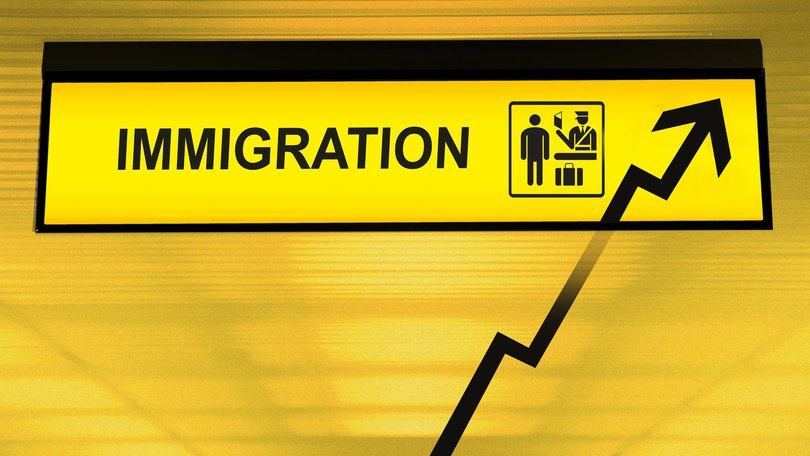Why the Albanese Government relies on high immigration to boost tax revenue

The Albanese Government relies on high immigration to boost income tax revenue, with new Treasury papers illustrating the addiction of both sides of politics to strong overseas population growth.
Collections from personal income taxes were $3.4 billion stronger in the Final Budget Outcome compared with predictions made in the pre-election March Budget.
Monday’s Treasury update showed receipts from income tax levied on individuals added up to $338.3 billion.
Sign up to The Nightly's newsletters.
Get the first look at the digital newspaper, curated daily stories and breaking headlines delivered to your inbox.
By continuing you agree to our Terms and Privacy Policy.This made up a bit more than half of the Commonwealth’s $657.8 billion collected from all its tax receipts.
Treasurer Jim Chalmers said the boost from personal income taxes was a reflection on a strong labour market, with unemployment near historic lows at 4.2 per cent.
“One of the key reasons why the Budget is stronger is because more people are working more and earning more and that is a source of considerable pride to our Government,” he told reporters in Canberra.
“Not just because it’s good for the Budget but because it’s good for millions of Australians and workers who were subject to almost a decade of deliberate wage suppression and wage stagnation.”
But AMP chief economist Shane Oliver said the big surge in revenue from personal income taxes demonstrated how the Federal Government relied on skilled migrants for financial reasons.
“There’s no doubt it would have played a role. Immigration has come in stronger than expected. That means more people in the economy earning more income,” he told The Nightly. “Of course, that means more taxes paid in Canberra.”
Smaller deficit
The deficit for the 2024-25 financial year fell by almost $18 billion to $10 billion, down from $27.6 billion forecast in the March Budget.
Dr Oliver said stronger economic activity from more skilled migrants was good for the Budget bottom line.
“It’s one of the reasons why the Budget deficit has ended up so much smaller than it was originally projected,” he said.
In the year to March, Australia took in 315,900 new overseas migrants on a net basis, with this figure including the permanent intake of skilled migrants along with international students, who have limited working rights.
The number was slightly below Treasury’s March Budget forecast of 335,000 for the last financial year, ending in June.
Immigration levels hit record levels approaching 550,000 in late 2023, which was five times the average annual levels of 100,000 during the early 2000s before the mining boom.
Personal income taxes were the biggest source of Federal Government revenue that could be spent by Canberra, ahead of company tax ($138.8 billion) and superannuation fund taxes ($25.7 billion).
Economic boost
Revenue from the Goods and Services Tax added up to $90.3 billion, an increase of $922 million in revenue that is distributed to the states and territories.
“I don’t know whether it changes much with the States: they also benefit from the stronger population growth because it means more spending in the economy which means higher GST collections,” Dr Oliver said.
While good for the economy, high immigration is also linked to unaffordable housing and the fact Australia had, until late 2024, struggled with a per capita recession where economic output for every Australian had been going backwards.
“You boost the size of the cake,” he said. “The economy’s much bigger because of high immigration, which has all sorts of benefits: more spending in the economy, more income in the economy, more people employed and that, of course, leads to more tax collection whether it’s income tax or GST. But the downside is it doesn’t necessarily mean higher living standards.”
Former opposition leader Peter Dutton campaigned during the last election to cut the permanent intake, covering skilled migrants, by 25 per cent.
But it was his side of politics under former Liberal prime minister John Howard that more than doubled the annual net overseas migration intake to levels approaching 250,000 by 2007, after a decade in power.

